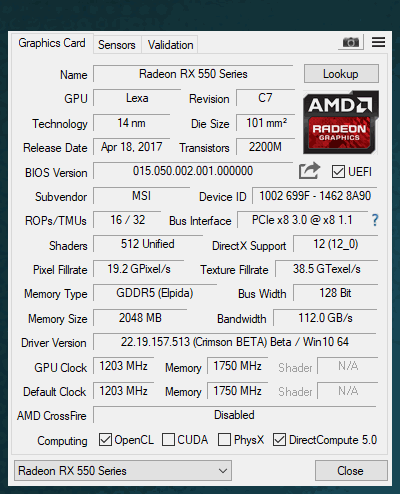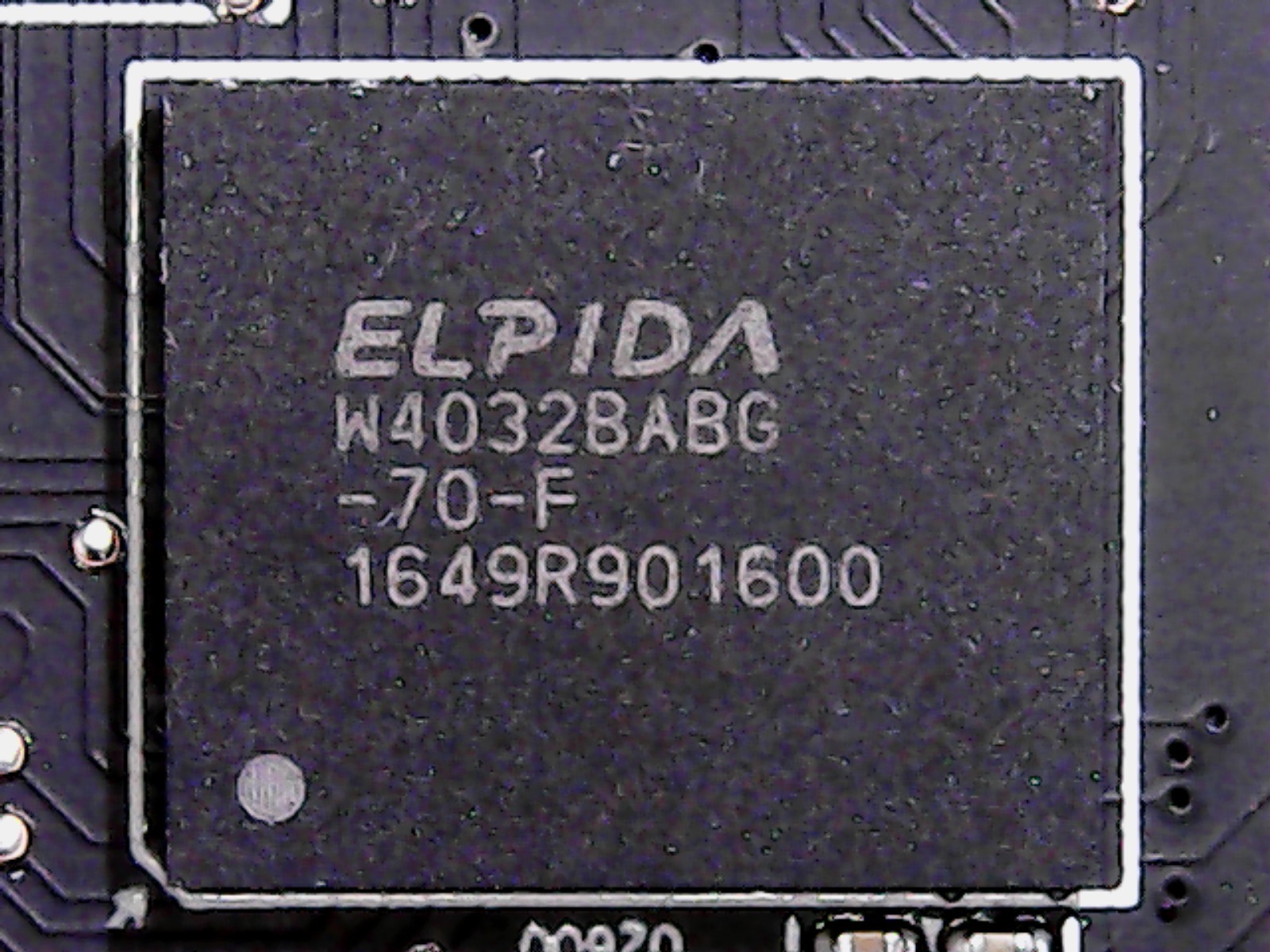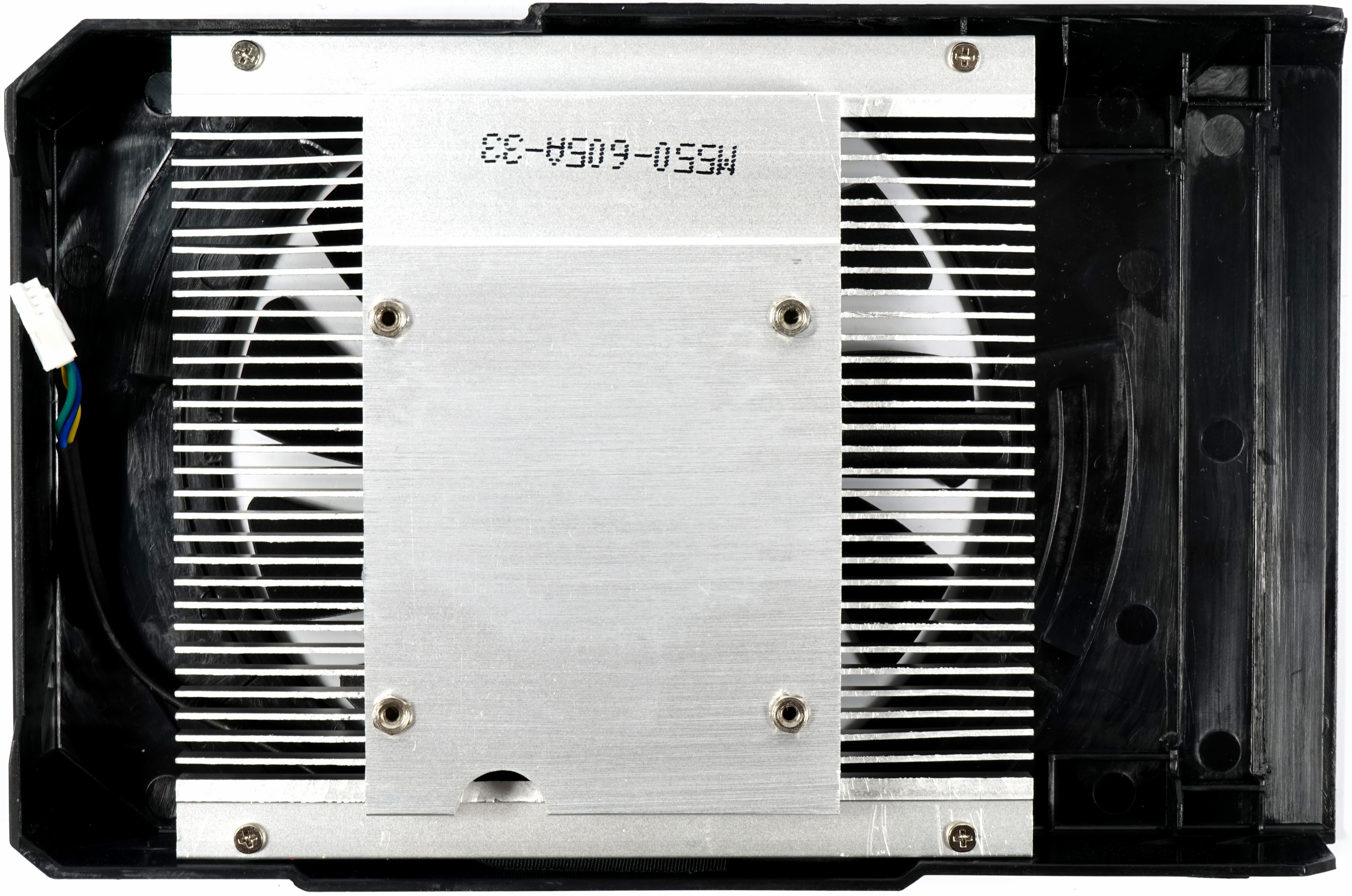AMD Radeon RX 550 2GB Review
Why you can trust Tom's Hardware
MSI RX 550 Aero ITX 2GB
Introducing the MSI RX 550 Aero ITX 2GB
AMD couldn’t provide us with its own reference design, so we’re using a model from MSI for our review. The RX 550 Aero ITX 2GB comes overclocked to 1203 MHz from the factory, though its memory frequency shares the 1750 MHz base spec.
There’s no semi-passive fan mode. Instead, MSI prioritizes simplicity, safety, and, of course, price for its entry-level model.
The slight GPU overclock shouldn’t make an appreciable difference to performance, especially since we’re not sure if MSI's RX 550 Aero ITX 2GB can sustain its boost clock rate in light of AMD's power limit.
Specifications
Exterior, Dimensions & Connectors
Weighing just 282g, the RX 550 Aero ITX 2GB is a very light card. It’s also compact at 15.5cm long, 10.5cm tall, and 3.5cm wide. Those dimensions occupy exactly two expansion slots, and the lack of a backplate means you don't have to worry about compatibility issues with other components.
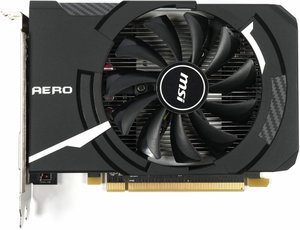
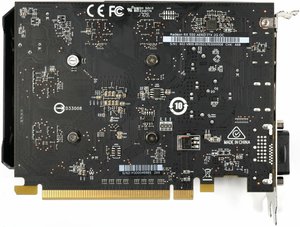
The fan shroud is made of plastic, though MSI did put some effort into the injection molding. Its rough surface feels and looks nice, while other aesthetic touches add character. Those metal-looking elements are actually matte silver lacquer imprinted on the surface, though.
The top of MSI's RX 550 Aero ITX 2GB features the company logo, and of course there is no power connector.
Underneath, the bottom is fairly boring. No big deal, you'll never look down there post-installation, anyway.
Get Tom's Hardware's best news and in-depth reviews, straight to your inbox.
The front and back of the card are fairly free-flowing. This is beneficial in light of the horizontally-oriented cooling fins.
MSI adds a total of three display outputs to the slot bracket: one dual-link DVI port, one HDMI 2.0 interface, and a DisplayPort connector.
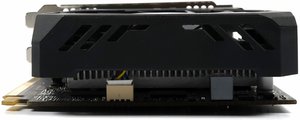
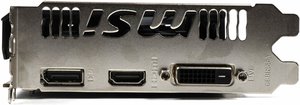
Voltage Supply & Board Layout
It’s easy to nail the layout on such a small graphics card, and MSI's RX 550 Aero ITX 2GB is no exception. A simple, tidy design gives us nothing to complain (or get excited) about.
The RX 550 Aero ITX 2GB's memory is supplied by Elpida (now Micron). Four W4032BABG-70-F modules offer 4Gb density (16x 256Mb) with a maximum clock rate of 1750 MHz. They're the same ones we found on AMD's Radeon RX 570. These particular ICs don’t have a lot of overclocking headroom, especially since they aren’t actively cooled. In the past, they didn't deal well with temperatures beyond their rated specifications.
The GPU’s voltage supply is almost overkill with its three phases supplied by a Richtek RT3662AC dual-output PWM controller. This chip is an interesting choice, since you'd expect to find it on a laptop motherboard rather than a graphics card. It does simplify the card’s design, though, with its three embedded MOSFET drivers.
MSI includes one MagnaChip MDU1514 single N-channel trench MOSFET for the high side and one MagnaChip MDU1517 for the low side per phase. These are solid 30V models that can do their jobs without active cooling.
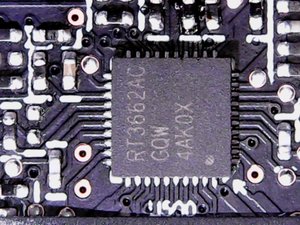
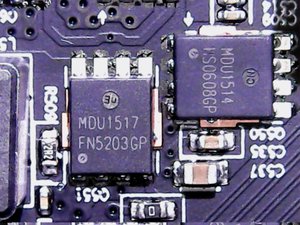
Capped ferrite coils are used for both the GPU and memory voltage converters. They stand on end, since their height doesn’t really make a difference.
The memory’s voltage supply is realized through uPI Semiconductor's small uP1529, which controls the single phase consisting of another MagnaChip MDU1514 and MDU1517 pair.
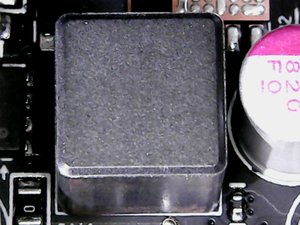
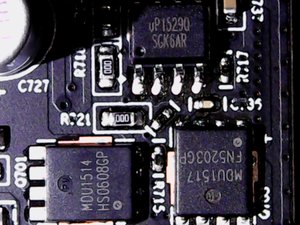
Cooling Solution
There’s not a whole lot to say about MSI's cooler. It's made of extruded aluminum and weighs 120g. The fan’s diameter and 11 blades put it on the noisy side, but we’ve certainly heard worse.
MORE: Best Graphics Cards
MORE: Desktop GPU Performance Hierarchy Table
MORE: All Graphics Content
Current page: MSI RX 550 Aero ITX 2GB
Prev Page AMD Radeon RX 550 2GB Next Page Test System & Methodology
Igor Wallossek wrote a wide variety of hardware articles for Tom's Hardware, with a strong focus on technical analysis and in-depth reviews. His contributions have spanned a broad spectrum of PC components, including GPUs, CPUs, workstations, and PC builds. His insightful articles provide readers with detailed knowledge to make informed decisions in the ever-evolving tech landscape
-
dstarr3 Wow, can't even hit 60fps in Doom. Talk about a sheep in wolf's clothing. This is barely a step above those $30 GPUs that you buy strictly because you don't have onboard graphics.Reply -
TechyInAZ Reply19617624 said:Wow, can't even hit 60fps in Doom. Talk about a sheep in wolf's clothing. This is barely a step above those $30 GPUs that you buy strictly because you don't have onboard graphics.
This is an 85$ GPU, competing with more the likes of a GT 740. So don't expect good details at such a low price point. $30 GPUs are worse than IGPUs BTW.
However, you can still find GTX 750s and 750 tis used for the price of a 550 and it performs much better. -
LucoTF I think if it comes down $10-$20 it will be a contender, it does solidly outperform AMD APUs and hopefully will help to keep our more budget orientated gamers away from the A8s and A10s...Reply -
MCMunroe I don't understand why these are all full height double width cards. Wouldn't the only purpose be to install in a small form factor case?Reply -
TallestJon96 They should be selling the old 460 as the 550, for $80, and then sold this gpu as the 540 for $50-$60.Reply
Its hard to buy a card that you know can't keep up with the consoles. What happens when a big game comes out and you don't have the horse power to actually play it? The 460 and 560 can keep up, but the 550 might he left behind.
Save your pennies for another couple weeks and buy something better, its worth the wait -
Glock24 Very dissapointing for the price. At $50 might make more sense. Then again, I would only use this for a system without IGP for video acceleration.Reply
On a side note, images finally load correctly using Firefox on Android. -
Joe Black Face it... Its a 720p card. Just like something like the a10-7890K using integrated graphics is good for 720p gaming too.Reply
That's the value proposition that should be explored. the A10 w. integrated, or the 550 discreet. -
InvalidError Reply
There is a very simple reason nobody makes new GPUs for under $80: there is next to no profit to be made from them.19617777 said:They should be selling the old 460 as the 550, for $80, and then sold this gpu as the 540 for $50-$60.
Keep in mind that out of that $80 MSRP, there is a ~60% distributor and retailer markup on the manufacturer's own price, so the manufacturer itself only sees ~$50 of it to cover DRAM, GPU chip, PCB, support components, HSF, assembly, testing, packaging, R&D, marketing, gross profit margin, etc. In other words, manufacturers barely break even on those and don't want you to buy them unless your choice boils down to either that or nothing. They'd much prefer that you buy the RX560 for $20-30 more which translates to $10-20 more gross profit for the manufacturer.
Who are you going to get an alternative sub-$100 GPU from? Nvidia has bailed out of that market altogether to focus on $150+ (launch-time MSRP) GPUs. -
ohim The card is for E-Sports gaming and instead of starting with CS/DOTA etc you start with Doom and BF1.. games for which the card is not intended :)Reply
